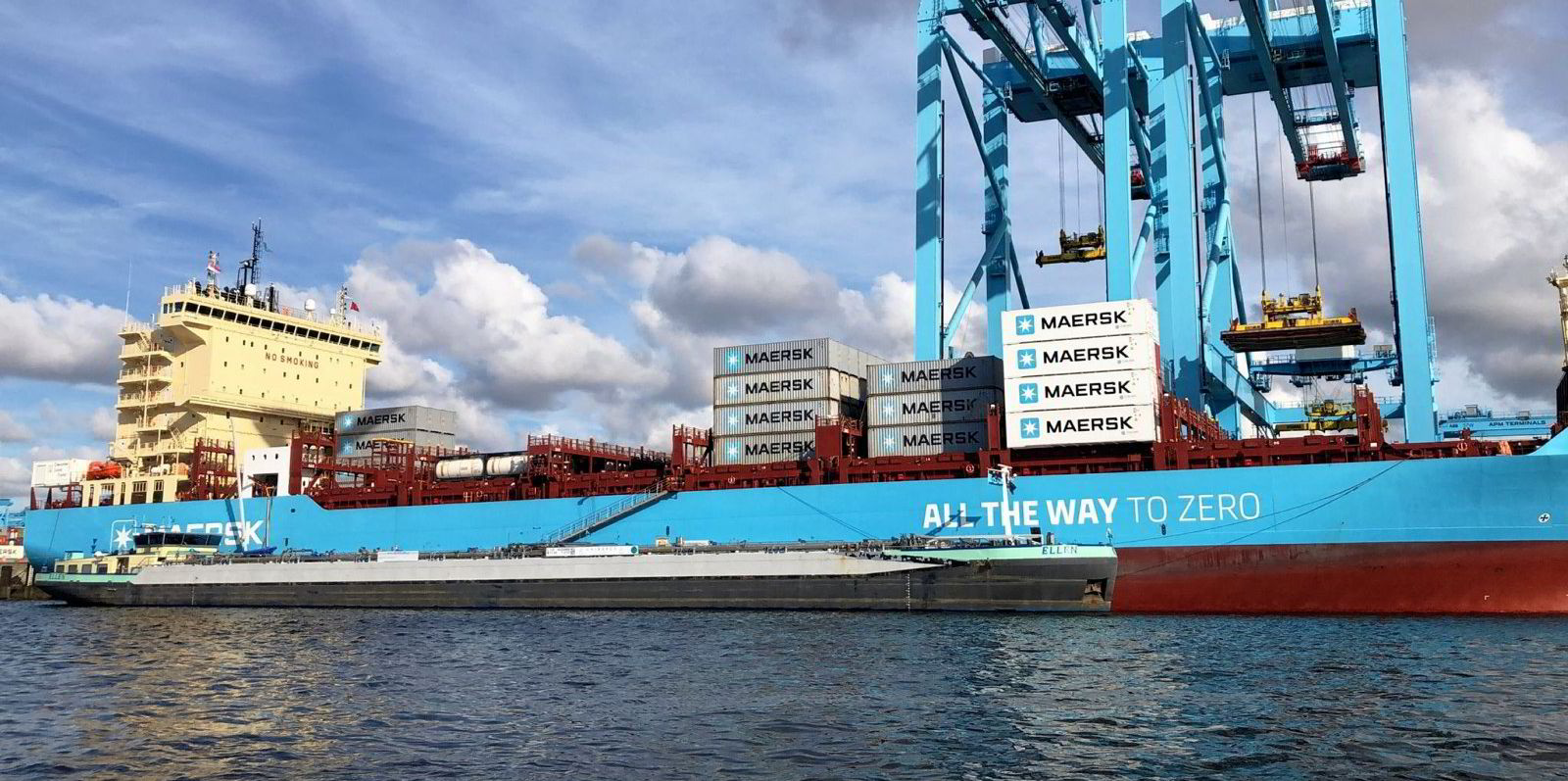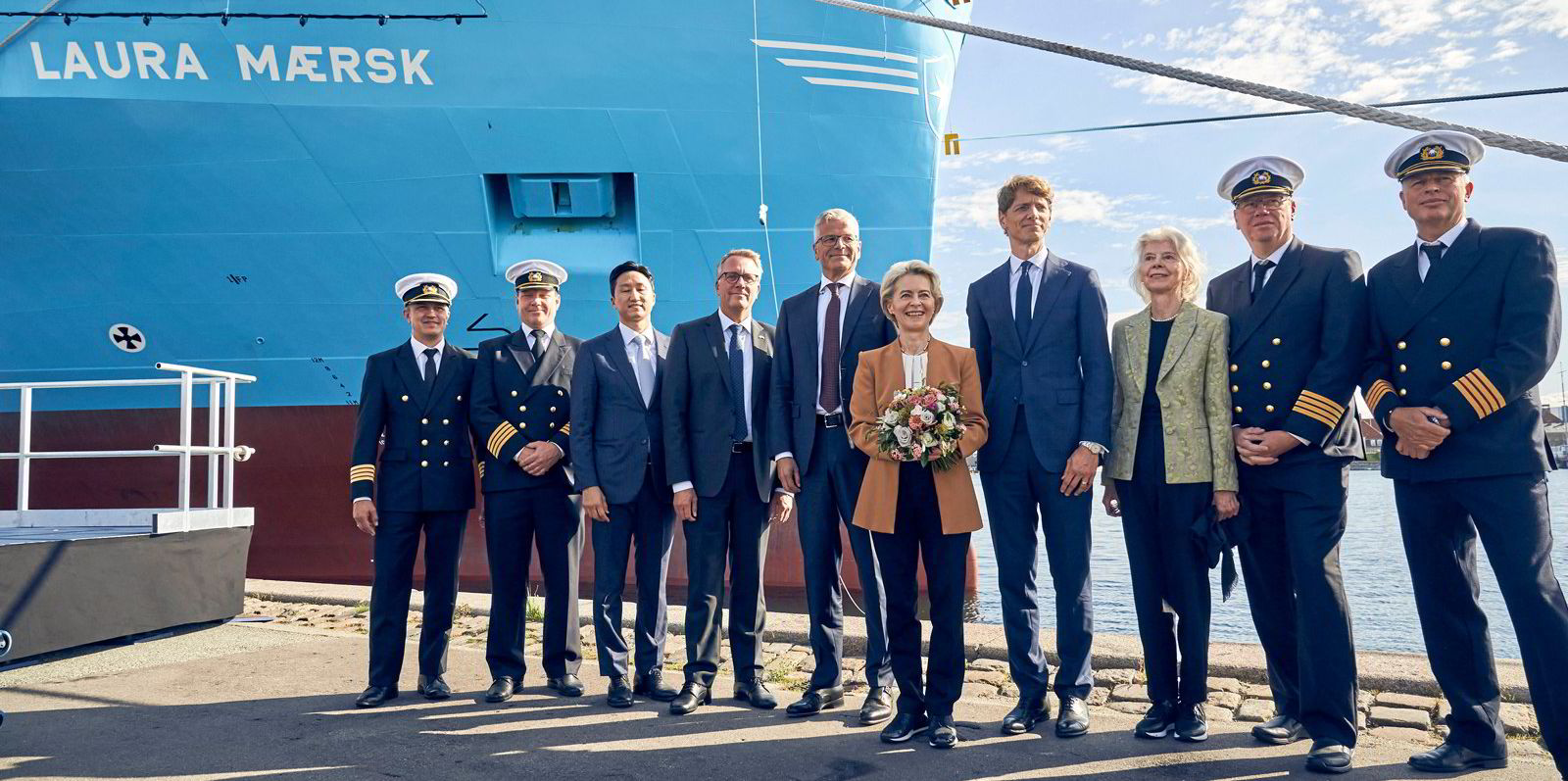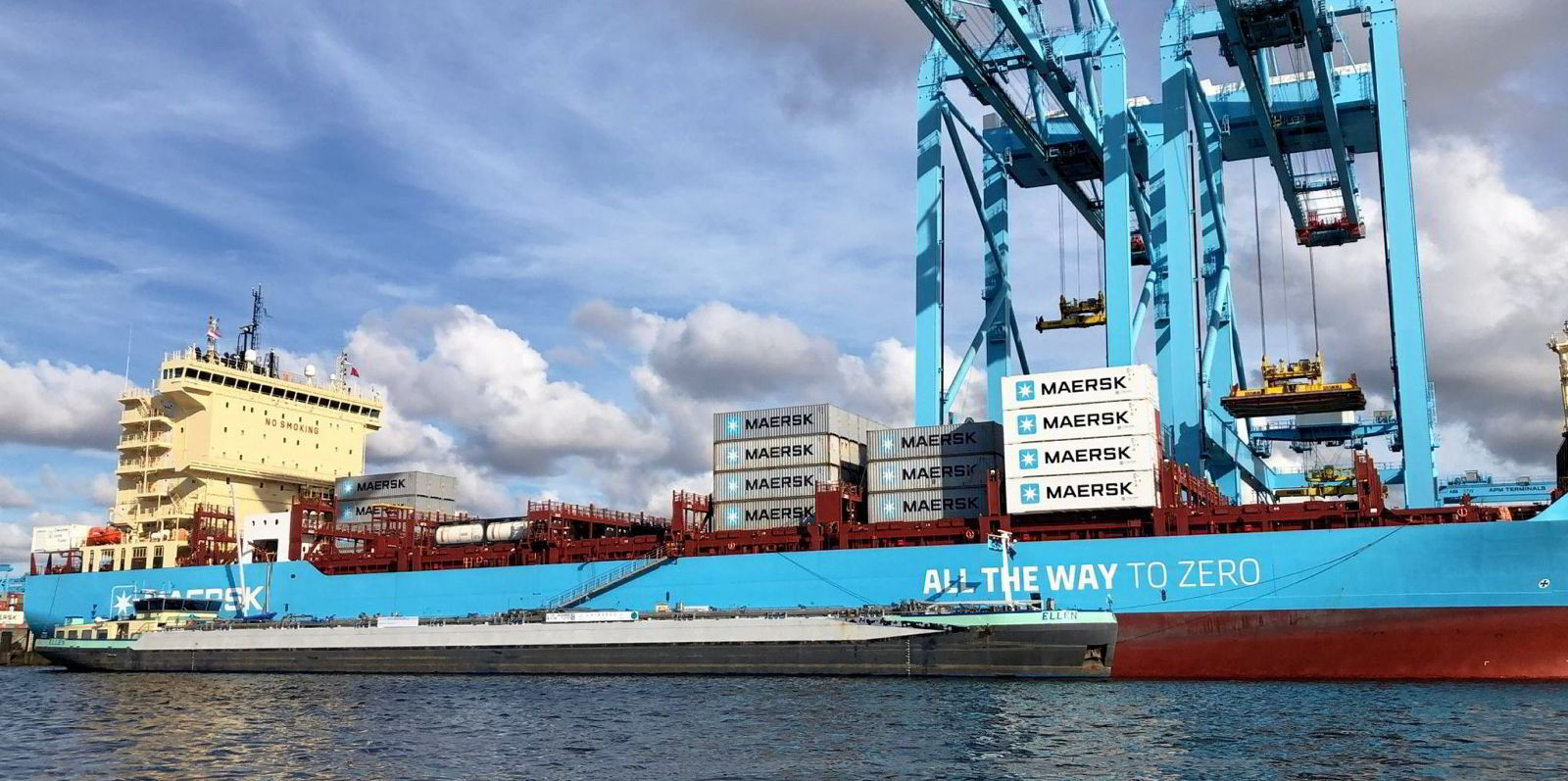Container ship giants AP-Moller Maersk and Seaspan Corp are moving ahead with their plans to convert conventional marine-fuel-powered neo-panamax boxships to run on methanol.
Maersk plans to retrofit one of its H-series of Hyundai-built, 14,000-teu container ships next year.
Leonardo Sonzio, head of fleet management and technology at Maersk, said: “We have already committed to the first-ever methanol conversion which will happen in the middle of next year.”
The conversion job will help inform future conversions with an additional five container ships in the series lined up for conversion by 2027.
TradeWinds’ sources suggest that Maersk is in contact with several shipyards in China including Qingdao Beihai Shipbuilding Heavy Industry for the conversion work for a series of ships.
“Through that experience, we will learn what are the challenges, what are the considerations you need to do in terms of engineering, time needed in dry dock etc,” he said.
“That will inform our future decisions whether we want to do more retrofits, or we see other pathways towards the target.”
He said retrofits will play a part in helping Maersk become carbon neutral by 2040 and, by 2030, having 25% of its volume being shipped carbon neutral.
“The way we will go about is a mixture of technologies, newbuilds and retrofits,” Sonzio said.
Seaspan’s conversion plans
Meanwhile, Seaspan has announced it is working with engine maker MAN Energy Solutions on its conversion plans.
It is lining up as many as 30 of its ships of 10,000 teu and 11,800 teu to use methanol as fuel.
TradeWinds understands that Seaspan plans to have an initial 20 units of its Yangzijiang Shipbuilding-built 10,000-teu and 11,800-teu boxships switch to dual-fuelled vessels.
The container ships were built between 2014 and 2018.
The conversion job entails lengthening the container ships and modifying the engine to run on methanol.
Shipbuilding experts estimate the cost of modifying the engine to be between $8.5m and $10m each.
But the full conversion including a main engine conversion, fuel supply system, methanol tank and all related works — and docking expenses — could see the total costs run as high as $22m to $25m.
On top of the modification costs, the vessels involved will be taken out-of-service for 60 to 80 days in dry dock.
Some have questioned whether the loss of employment and conversion costs are justified at a time when there is a massive backlog of boxship newbuildings amounting to 27% of the trading fleet.
But one container shipbroker said it is essential for tonnage suppliers such as Seaspan to upgrade.
“Otherwise they may have difficulties securing further long-term charter contracts and have a green story they can sell internally but also externally,” he said.
He added that chartering these converted vessels will be much cheaper than ordering additional tonnage under the current high newbuilding prices and very long lead times.
Marginal costs
Ralph Leszczynski, global head of research at Bancosta, thinks liner owners modifying their ships to run on methanol fuel is about minimising marginal costs.
“With oil prices and bunker prices rising again in recent months, it boosts the attractiveness of alternative fuels,” he said. “It seems that based on their assumptions about where bunker prices are going and the prices they expect for methanol, making such an upfront investment to retrofit the existing vessels makes financial sense to them.”
He added that it is unlikely for a company to go and demolish 10-year-old tonnage, “so you need to try to squeeze as much money from them as you can ... investing in them so that fuel costs are reduced is a way to do that”.
There have been concerns raised over whether the ships will be able to secure an adequate supply of methanol.
Leszczynski said vessels of 14,000 teu have very predictable trading patterns.
They are trading between China, Singapore and Europe and back, and can bunker at “big ports” such as Singapore and Rotterdam, where the supply even of rare and experimental fuel types will likely be available.





